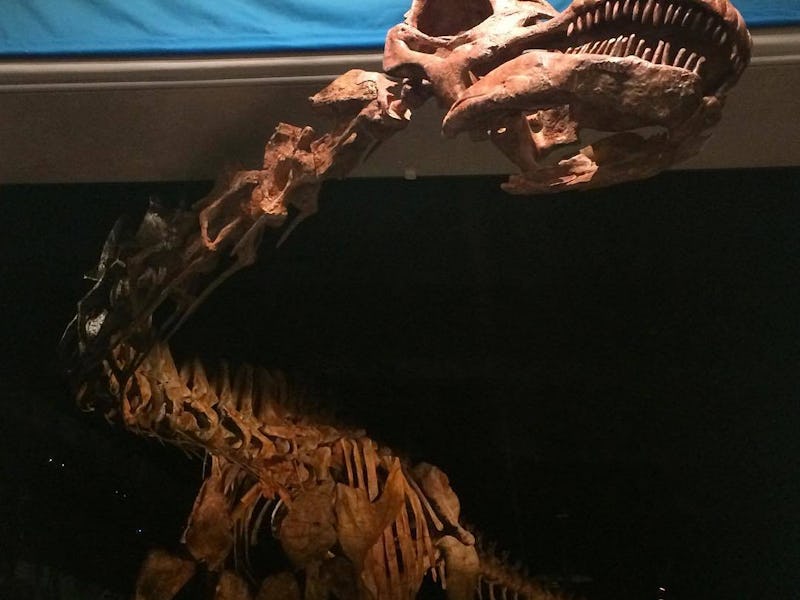A Titanosaur Stands in the American Museum of Natural History
It’s too long for the room, too tall for the ceilings but ready to visit nonetheless.

The American Museum of Natural History (AMNH) in New York unveiled a titanosaur exhibit on Thursday, a creature so large it doesn’t fit within the museum hall.
Back in 1904, the AMNH brought a brontosaur skeleton to its galleries, and New York City buzzed—a specimen “destined to enlighten the rising generation of the twentieth century” was how the New York Times described the 67 foot-long 15,000-pound “thunder saurian” fossil that was greeted with tea parties once made open to the public in 1905.
New Yorkers “poured by thousands” then to see the museum’s once top exhibition—but as of this writing, history is yet to count the total visitors that will come to see a creature (open to public viewing starting Friday) that doubles the size of the classic AMNH brontosaur.
The largest dinosaur ever discovered, the titanosaur was 122 feet in length and weighed roughly 70 tons—yet like its smaller sauropod relatives was a herbivore. Living during the Late Cretaceous Period, the actual fossil was unearthed in modern day Argentina—but its bones only served as the model for what now stands in AMNH, as its remains were scanned and replicated with fiberglass—so no, save for a handful of scheduled sidebar fossils, the monstrosity on display is not the true beast.
Nonetheless, it is life-size—actually making it physically too large to stand up straight under the museum’s 19-foot-high ceilings: “We struggled with just fitting him in, and in order to do it, we had to crouch him down,” said museum president Ellen Futter to ABC-TV NY (WABC). As it turns out, the hall also isn’t long enough to completely hold the dinosaur, as the titanosaur’s head protrudes from its exhibit room into an adjoining entranceway.
Yet despite its remarkable dimensions, the possibility remains that an even larger subject could one day grace the AMNH: “This is probably a young adult, so it’s not even full grown,” paleontologist Michael Novacek told WABC, “There may be bigger dinosaurs found in the future. We don’t know.”